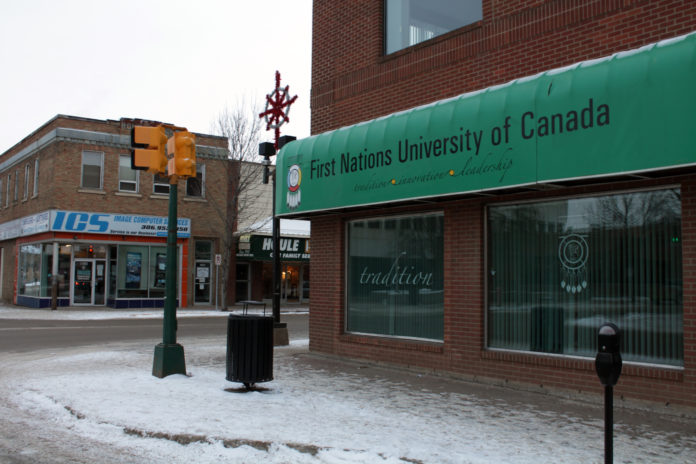Social work students imploring the government to introduce consistent funding for in-school mental health counsellors
A group of First Nations University social work students are banding together to demand better access to mental health supports for the province’s youth.
The social workers began their project last term as a part of a school assignment. They put together photo campaigns in an effort to destigmatize mental illness. While doing research for the project, looking for gaps in services, they discovered that the contract between the Prince Albert Catholic School Division and Catholic Family Services had been ended due to school division budget cuts. Director of education Laurel Trumier told PANow the cuts were due to a tight budget, and the division was hoping future funding restorations would support the program. Three mental health counsellors in elementary schools were cut.
According to the group of social work students, called Fight.the.stigma., of the 200 or so open files Catholic Family Services had at the time the partnership ended, very few have continued to access fare.
“Having mental health counsellors in school was one way to reduce barriers and improve access to mental health care for children that has now been abolished,” Fight.the.stigma. wrote in their open letter, published to their Facebook page.
“Many children do not have access to mental health services outside of schools. … This is highlighted by the information provided by Catholic Family Services who assert that very few of the 200 children who were accessing counselling in the schools continued with counselling in the community, and of the few that did transfer … even fewer have been able to continue due to rides/parental problems.”
One of the students in the group, Al Grigori, said the lack of services available to Prince Albert youth and other youth across the province is deeply concerning.
“Are youth are so often disregarded. They’re not part of the ruling, class and not part of the decision makers. They’re not getting jobs year, they’re not the ones voting and they’re not the taxpayers, so they’re kind of pushed to the wayside,” Grigori said.
“Everyone who has worked on this project, we’re all mothers or grandmothers to children in the school system directly impacted by this change in the availability of services.”
The group has been working with Prince Albert Northcote MLA and former social worker Nicole Rancourt. Rancourt has helped the group gain the information they need, and has helped them put a petition together to call on the province to provide stable funding exclusively for in-school mental health supports separate from the lump sum funding. The petition also calls for all decision makers to take part in mental health awareness training.
“I keep in touch with the social workers at First Nations University because of my own background as a social worker,” Rancourt said. “But also, the subject was a particular interest because of my background in mental health.”
According to Grigori, there have been some encouraging signs in the most recent budget that the government is taking mental health seriously. The Facebook post referenced the inclusion of a pilot program based on Alberta’s Mental Health Capacity Building in Schools Initiative. The budget also included funding for new child and adolescent specialist positions in the health care system, the implementation of a targeted doctor training program to improve capacity to assess and treat child and youth mental health conditions, funds to fire about 40 full-time equiavlents to develop multi-disciplinary community recovery teams to provide support to those with complex and persistent mental illness, expansion o suicide prevention efforts, expansion of addiction services for Prince Albert, an increase in access to mental health first id courses, patient record tracking tools and an expansion of online mental health services province-wide.
While the Fight.the.Stigma group applauds those changes, it still doesn’t address the barriers faced by students who have difficulty accessing those services outside of school.
“When you look at community we have so many issues that are plaguing our youth. We have really high addictions rates of high crime rates violence within our community and a lot of that can be linked to a lack of resources,” Grigory said.
“I do think it’s great were going to increase access to community mental health resources, but a problem for youth is they can’t just go to their appointments and so they rely on a lot of other people to get them to appointments. When you have the counsellors in the schools, it eliminates so many barriers for those children” Grigori said.
According to the group’s Facebook post, those barriers include “a lack of awareness from the parents, parents not having the ability to take children to appointments, or parents who are too ill dealing with their own mental illness/substance misuse to provide their children with mental health services.”
Rancourt agreed with Grigori’s assessment.
“We have families regularly contacting us saying they’re having a hard time getting services for their kids,” she said.
“I think it’s important that both (the health and education systems receive funding) because when people want to access services, they need to have opportunities to access them where they feel more comfortable.”


